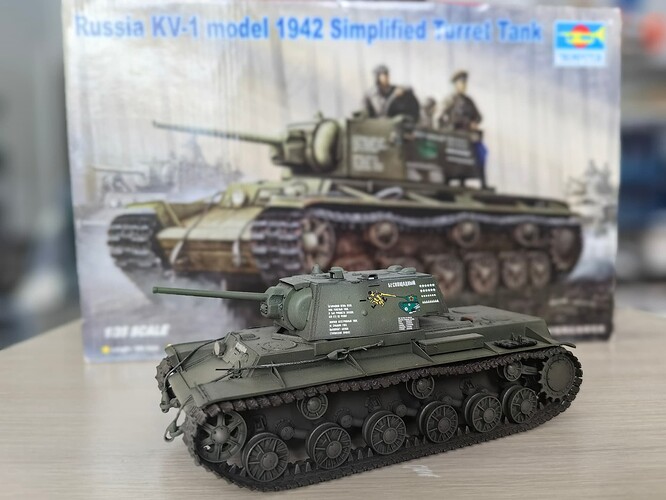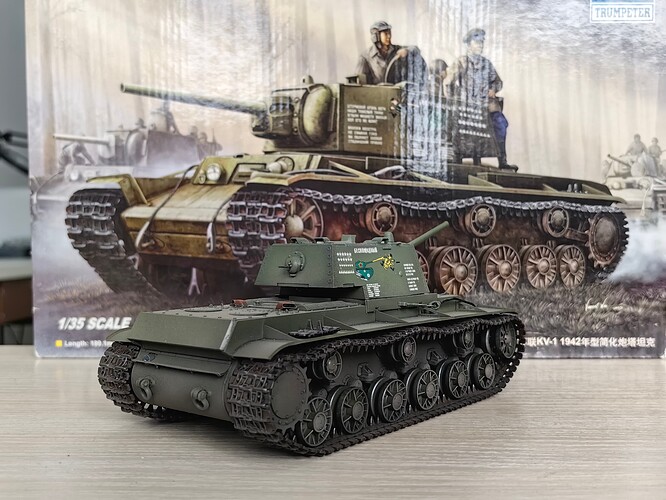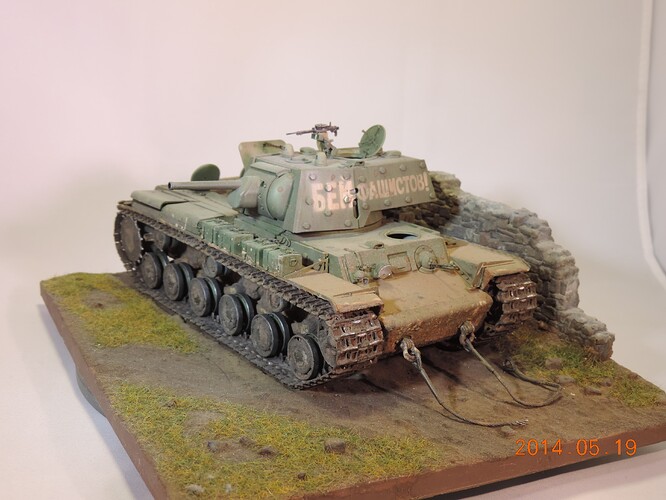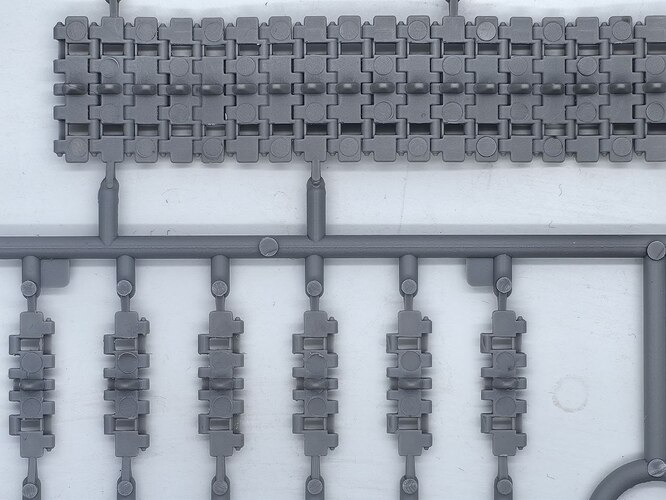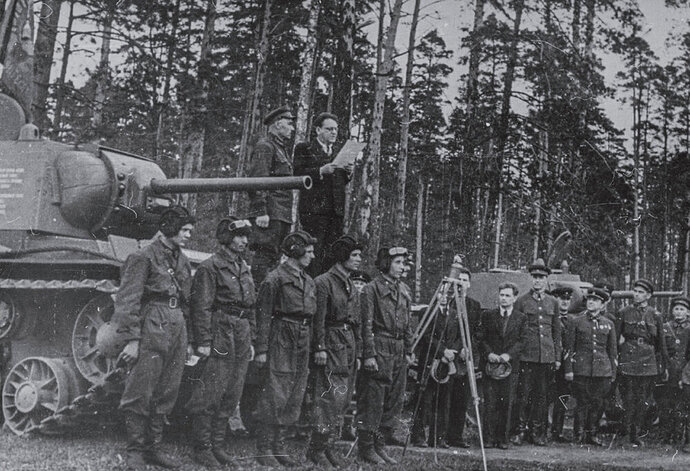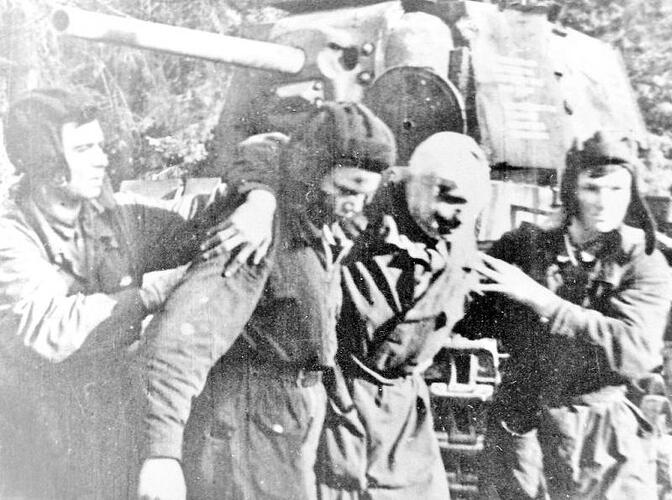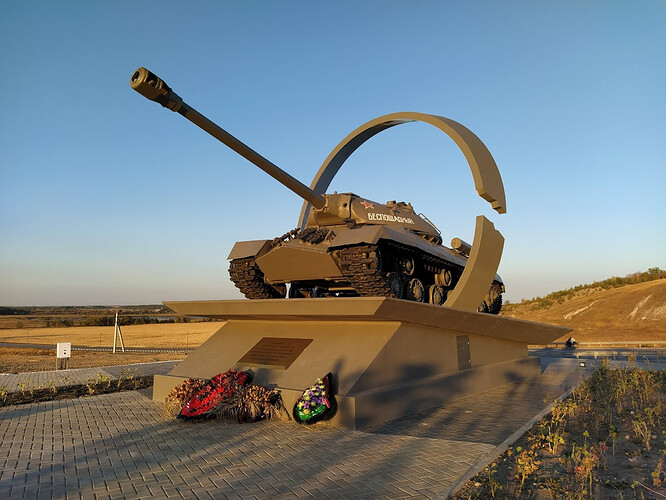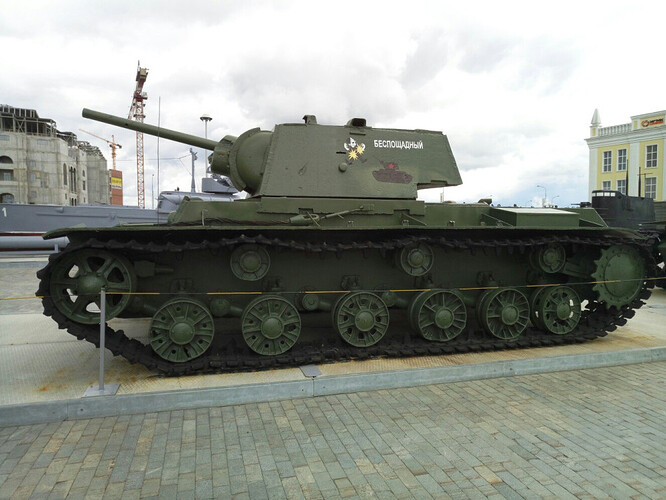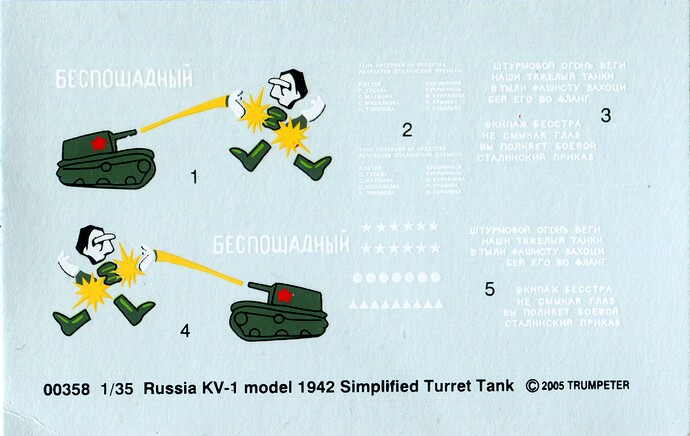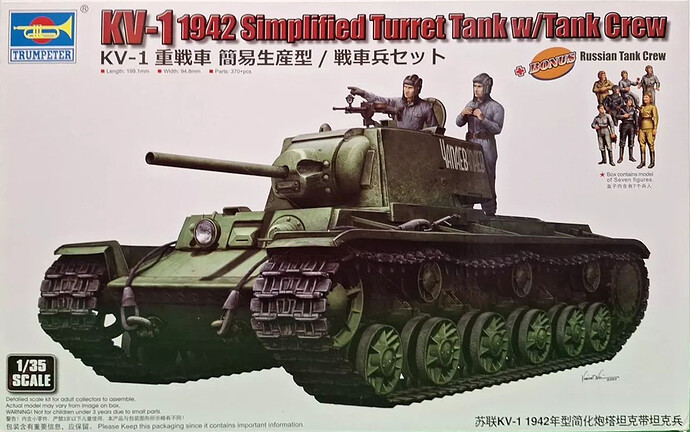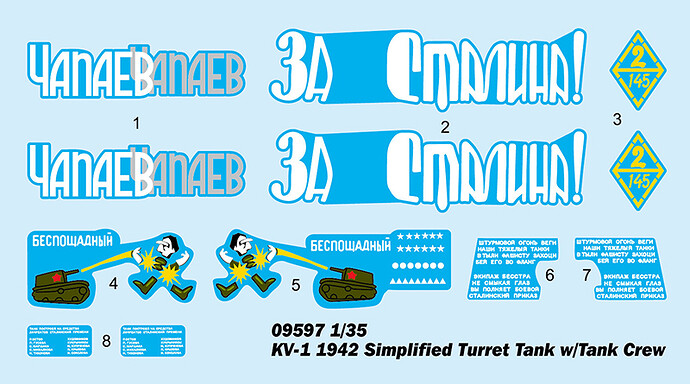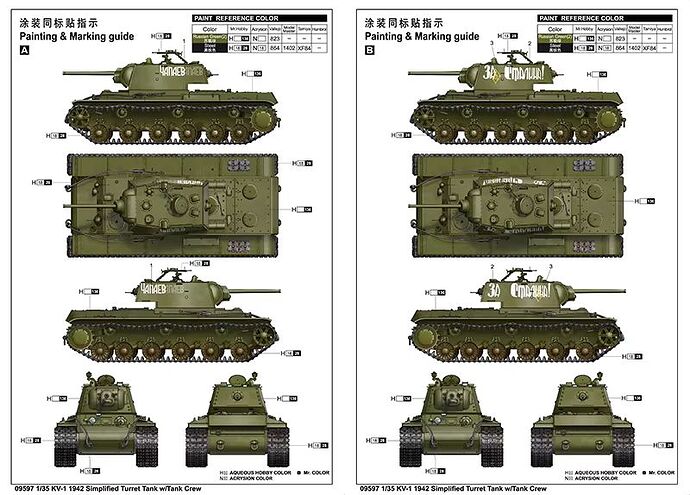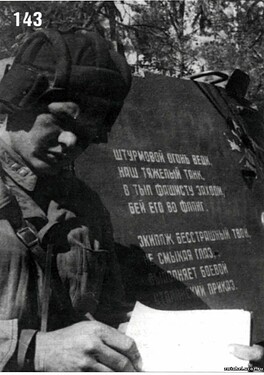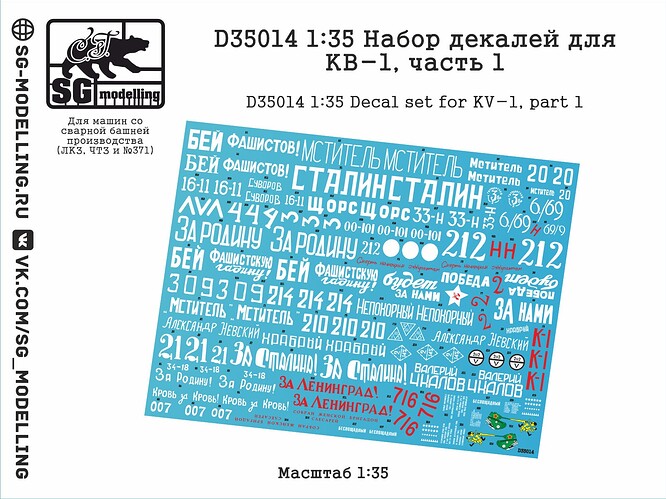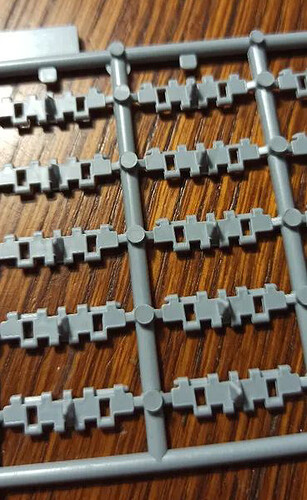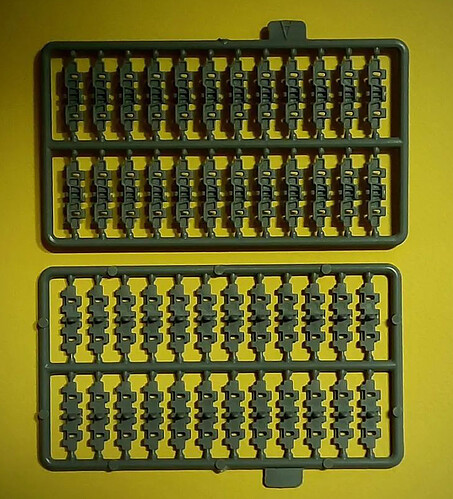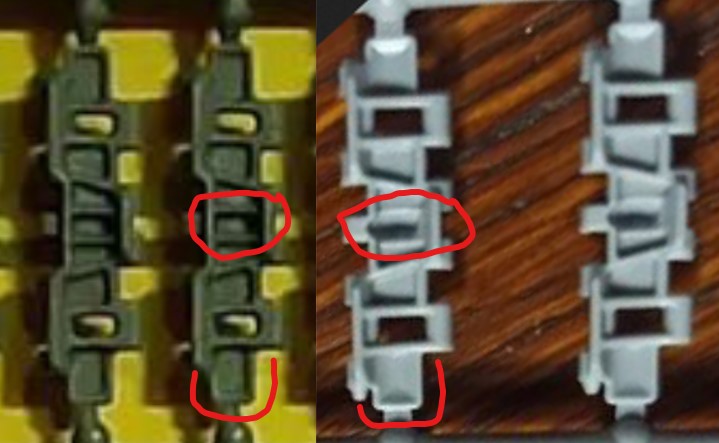Taking advantage of the long New Year holidays (and the entire country was on vacation for 11 days from December 29, 2024 to January 8, 2025), I quickly started and finished assembling the 00358 Russia KV-1 model 1942 Simplified Turret Tank kit from Trumpeter , better known to us as “Беспощадный” (pronunciation: “Besposhchadny ”, translation: Merciless).
Declaring myself as a collector of Soviet armored vehicles from the WWII period, I discovered that the latest builds are all modern imports. But at least I began to identify them a little.
This is not my first KV, but considering that I assembled my firstborn more than 10 years ago,
you can call this one the first.
There is nothing special to say about the model – a typical representative of the KV line from Trumpeter, the flaws of which have already been described many times.
I assembled it as is – from the box. The only additions are the air duct mesh from Хмурый моделист (Gloomy Modeler).
Not so much for the purpose of improvement, but to test them in practice. This is the first 3D aftermarket in my life.
Oh, yeah. I also replaced the tracks. There are absolutely no complaints about the original ones – except for numerous and significant marks from the pushers on the visible sides of the tracks.
Although I have metal tracks in stock, I did not use them, but bought a set of tracks from MSD for $6.
Among the shortcomings of the model that I myself can see, the turret remained contrastingly clean, but the tracks, on the contrary, were over-contaminated. This was an accident, I got my hands on some previously untested chemicals, so I splashed them on heartily. There are three colors of rust, hairspray under the “kuzbaslak”, a wash and tracks from the rollers in metallic. And on top of all this beauty, there is dirt!
Despite the outward appearance of the decal, it is historically correct. In this regard, a little about the prototype.
Tank KV-1 «Беспощадный»
In April 1942, a group of creative workers were awarded the Stalin Prize of the second degree. Among other laureates, it was received by: poets V. M. Gusev, S. V. Mikhalkov (author of the USSR anthem and the Russian anthem), N. S. Tikhonov and S. Ya. Marshak (a very popular children’s poet), and cartoonists Kukryniksy (M. V. Kupriyanov, P. N. Krylov and N. A. Sokolov).
They discussed it and decided to jointly buy and donate a heavy tank to the Red Army.
The bonus was 50,000 rubles, a KV-1 tank produced by the Chelyabinsk Tractor Plant cost almost 350 thousand rubles in the first half of 1942. The price of a loaf of bread fluctuated on the market from 200 to 500 rubles, a kilogram of potatoes – 90-100 rubles.
The tank was built and on May 25, 1942, at a ceremonial meeting in the presence of Marshak, Mikhalkov and Kukryniksy, it was transferred to the 6th “a” Guards Tank Brigade.
A proposal was made to give this KV its own name and to further distinguish it from others with the help of an original drawing on the armor. The name was quickly decided upon: “Besposhchadny”. This is the word that appeared on the turret. In addition, a satirical picture was depicted next to it based on Kukryniksy’s sketch: a stylized silhouette of a Soviet tank firing direct fire at Hitler, causing him to fly into pieces. The caricature was supplemented with verses composed by S. Marshak:
|
Штурмовой огонь веди,
Наш тяжелый танк, В тыл фашисту заходи, Бей его во фланг. Экипаж бесстрашный твой, Не смыкая глаз, Выполняет боевой Сталинский приказ… |
*Shoot with assault fire,*
Our heavy tank, Go behind the fascist, Hit him in the flank. Your fearless crew, Without closing their eyes, Fulfills Stalin’s combat order… |
The crew was selected from tank crews who distinguished themselves in the battles near Moscow.
The tank was in service for a total of 9 months, and was hit for the first time in March 1943 during offensive battles in the Oryol region. At that time, the tank crew also suffered losses – the tank commander and gun commander were killed.
The tank’s history did not stop with the death of the commander. The KV-1 was repaired again, and with a renewed crew as part of its native tank brigade, the combat vehicle continued its combat path.
The battles near Yelnya were the last in the valiant path of the legendary tank. On August 31, 1943, in a heavy battle, the crew suffered losses again, the damaged tank was removed from the battlefield, but it was no longer subject to restoration.
Along with other tanks, it was delivered to Kubinka, and in 1948 the vehicle was sent for remelting.
There is quite a lot of information and photographs about the tank. The fact is that he ended up, as they would say now, in the media environment. The crew had to write letters to donors, who published them in newspapers or voiced them in speeches. Accordingly, the attention of the press and photojournalists. Even its repairs were not carried out in the usual manner, but poets chipped in again.
Monuments
In 2020, a monument was unveiled in the birthplace of the legendary tank’s first commander. The main element of the composition was a heavy tank breaking through a symbolic ring. Unable to install a wartime KV-1 on the pedestal, it was replaced by its “direct successor” — the IS-3.
On the tank’s armor, turning it into a monument, they reproduced the same inscriptions and drawing that “Klim Voroshilov” had, given to the tank guardsmen in May 1942 by poets and artists.
There was another similar monument earlier. The first monument to this tank was opened in Ukraine. On the outskirts of the city of Novograd-Volynsky, at the location of the 23rd separate guards tank Yelnya Red Banner Brigade, the successor of the brigade that received the tank, a memorial complex was built in 1977 in honor of the tankers who distinguished themselves in battles with the Nazi invaders.
Driver-mechanic, junior military technician of the guard Yegor Sergeevich Tsarapin near the pedestal.
In his LiveJournal article tankist_31, talking about the appearance of a model of the KV-1 tank in the museum in Verkhnyaya Pyshma, provides the following photographs.
From my visits to this museum: I remember the tank, I don’t remember the inscriptions on it.
The material is based on information on the Internet.
Decal
If it weren’t for the decal, there would be nothing to tell.
Not only the Chinese, but they especially, have problems with Cyrillic. The decal isn’t even flawed, it’s idiotic. This one should definitely be thrown out.
So if you bought this kit, do not use this decal, even if you speak a foreign language – you will ruin the model.
Trumpeter has another practically similar set, but with a crew.
Be careful with this also. The decal is the same – moronic,
but at least there is an alternative.
There is another set of this exact tank, but from a different manufacturer.
There is also an alternative in the inscriptions, and the decal is just a bit screwy: instead of «веди » – «ведя », «заходи » – «заходя ». That is, not the imperative mood, but the narrative mood.
Although this wording can be found on the Internet, here you can clearly see what letter should be there.
I knew right away that I would just throw the decal away. The best option, covering my current and future needs, was the D35014 Decal Set for KV-1, Part 1 set from SG Modelling , formerly New Penguin .
PS Don’t be mistaken: the word “Беспощадный” appears three times on the tank!
